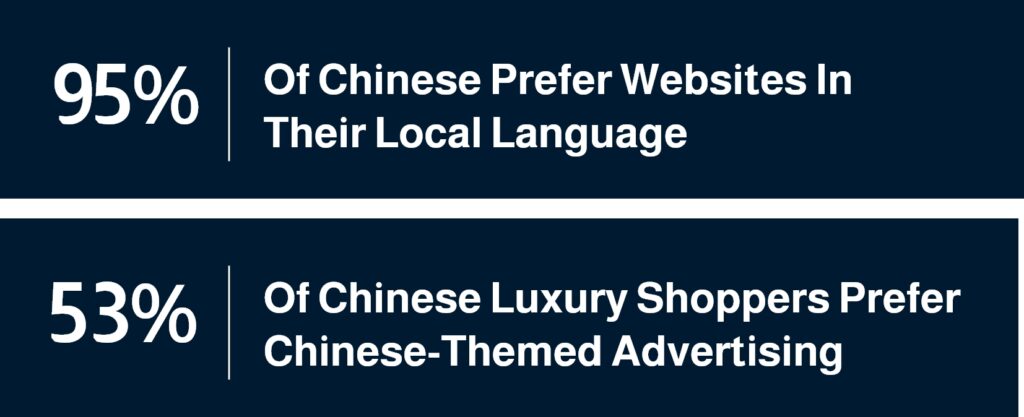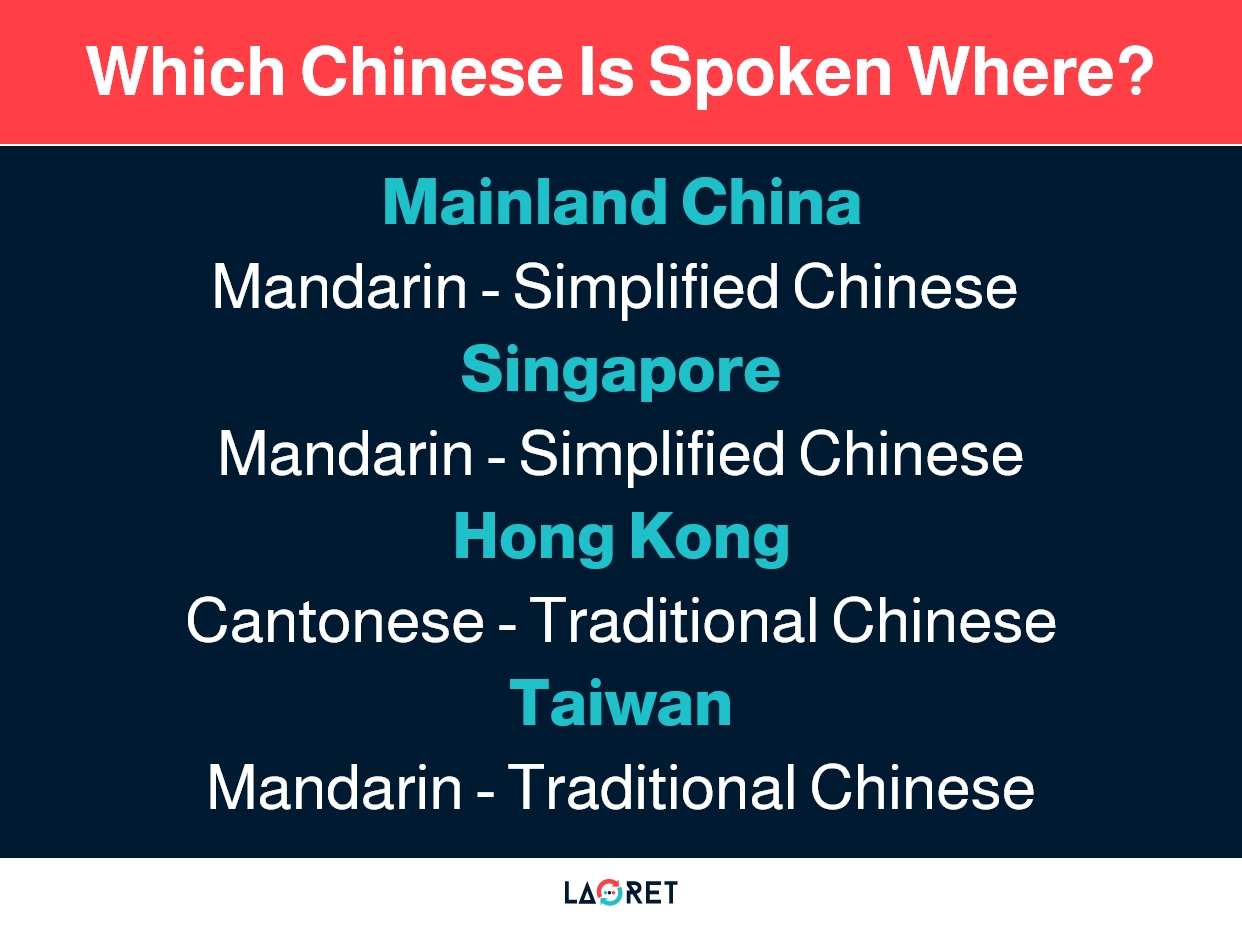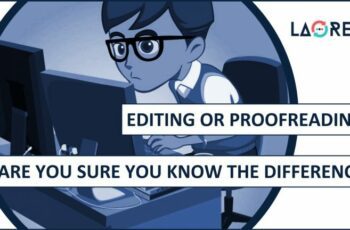The Difference Between Simplified and Traditional Chinese Made Easy
Did you know that translating and localizing your business in Chinese can give you access to nearly 20% of the world’s population online?
However, breaking into China’s market as a foreign company can be challenging. Despite the country’s openness and hospitality, the complexities of the Chinese language can be daunting for even the bravest of risk-takers.
In this article, we will explain in detail the difference between Simplified and Traditional Chinese characters in order to help you gain a better understanding of the unique features of the Chinese-speaking market. Keep reading to find out the right Chinese for your China’s market breakthrough.
Overview of the Chinese Market: Opportunities for Growth
In 2023, about 73.7% of the Chinese population had access to the Internet, a higher percentage than the world average.
Almost a billion individuals connect, share, and buy online, making China the world’s largest e-commerce market. The revenue for e-commerce is predicted to reach US$1.2 million in 2023.
Beyond eCommerce, China’s private consumption is projected to hit $12.7 trillion by 2030, reaching levels comparable to that of the USA.
You wonder how China’s private consumption levels are going to match that of the USA within the next 7 years?
Despite the strength and wealth of the Chinese government, the general population has been historically impoverished. However, the shift towards a more capitalist market has enabled greater market expansion and resulted in increased salaries, thus contributing to higher consumption rates.

Given its population of 1.4 billion people, it’s no surprise that any business would want a piece of the Chinese market.
However, an important factor in launching a successful business in China is language. While success in this market demands a bold vision, it demands a well-planned business expansion strategy that focuses on strategic positioning through the use of Chinese translation services.
In a Forrester survey, 95% of Chinese consumers stated a preference for websites in their local language. And according to Statista, 53% of luxury shoppers preferred that luxury firms incorporate Chinese cultural themes into their advertising.

Despite their openness to foreign companies, the Chinese remain profoundly loyal to their rituals, traditions, and cultural heritage, and primarily their native language.
But, what exactly is their native language, and which characters do they use? Keep reading to find out more on how to properly use business translation services that take into account the difference between simplified and traditional Chinese as well.
A Bit of History: Why is There a Different Simplified Chinese and Traditional Chinese Writing System?
In the 50s and 60s, the Communist Party of China reformed the traditional Chinese writing system, giving rise to Simplified Chinese characters, or what is known as Simplified Chinese, which was widely promoted throughout the country.
Language evolution is not unique to the Chinese language, as it has occurred in other languages such as English, where certain words have become discredited, and new words have been created such as the word to google.
In today’s fast-paced economic climate, it is normal for society to demand a language that is more practical.
The communist establishment stated that the main reason for the reform was to increase the literacy rate and to make it easier for everyone to communicate, write, and read in Chinese regardless of their background.
That really helped, since at that time, China’s literacy rate was around 20%, and now is estimated to be around 95%.
Attempts to further simplify the Chinese language‘s written form continue up to today. When choosing the characters to use in communicating and doing business with the Chinese community, it is important to conduct a prior market analysis that includes the difference between simplified and traditional Chinese.
Main Differences Between Simplified and Traditional Chinese
For thousands of years, each word in Chinese has been represented by characters that hold cultural and historical significance. These characters make up the Traditional Chinese writing system.
On the other hand, simplified Chinese involved reducing the total number of characters, with about 1,000 characters removed through consolidating alternative characters. For example, the characters å¢ and 樷, which were used interchangeably for cóng, “crowded,” were both consolidated into 丛.
Some characters sets were simplified into one, such as the character “hu¬ 諱”, which means “to taboo” and is made up of a character sets: “y¡n 言” and “w©i 韋”. The simplified Chinese version of this character is “讳”, which has the same meaning.
Another difference between Simplified and Traditional Chinese is that some characters have been completely replaced, such as Wèi è¡› “guard” being simplified to å«. This means that some characters used in traditional Chinese are no longer used in the simplified version.
The simplified characters are clearer and more straightforward, whereas traditional Chinese have more strokes.
To illustrate the difference between simplified and traditional Chinese characters, let’s take a common character é‚Š (biÄn), which means “side.” In traditional Chinese, it has 18 strokes, while its simplified form, è¾¹, has only 5 strokes.
As such Simplified Chinese is the preferred choice for many businesses because it goes well with the practicality of doing business.
Nonetheless, in localization, being understood and attracting the right audience is more important than practicality. For example, if you’re expanding to the Hong Kong market, using simplified Chinese will not do you any good. The Hong Kong audience will not understand you and will be confused.
In Taiwan for example, by law, all government documents need to be in traditional Chinese. If you sent an official document to a Taiwanese institution in simplified Chinese characters, it might really undermine achieving your goal and establishing communication with Taiwanese officials.
Below we provide guidance on the appropriate contexts for using each of these versions based on our expertise in Chinese speakers.
Where Is Traditional Chinese vs. Simplified Chinese Used?
Traditional Chinese characters are used primarily in Taiwan, Macau, Hong Kong, and in overseas communities, meanwhile, mainland China is switching more and more to the simplified version.
In Singapour and Malaysia only simplified Chinese characters are used. So, in every business setting and situation involving high-level professional writing such as contracts and governmental papers, this is the only accepted version.
Fun Fact: The United Nations has been using Simplified Chinese since 1973.

There are a few exceptions, for example, medical forms and other technical fields use mostly traditional Chinese characters. To ensure that you are compliant with the regulation, but also with the way things are done in China, it is crucial to seek guidance from expert medical translation services tailored to the specific audience. They’ll advise you on the more specific difference between simplified and traditional Chinese and other relevant market insights.
How to Choose the Right Language Services Provider to Approach Your Localization Project in China
If you want to stay behind the Great Wall of China use machine translation!
It is guaranteed to make any localization project fail.
The Chinese audience cares about their culture and language deeply and responds fast to businesses that show commitment to understanding and adapting their products and services to it.
Take KFC as an example – they left their American branding guidelines behind when entering the Chinese market – they offer rice and other Asian dishes.

Because the People’s Republic of China holds the biggest share of Chinese speakers, simplified Chinese is more commonly used, but that doesn’t mean that your case might necessitate traditional Chinese characters.
For example, the Chinese diaspora in the USA may prefer traditional characters, even if they migrated from mainland China.
Before choosing what type of Chinese to translate and what services to hire, you should be clear about where you’ll be expanding and who you’ll communicate with. A language services provider (LSP) can also advise you on the form of Chinese you have to use.
Localization is more than just translating your content into another language. It involves adapting your content to fit the cultural and linguistic nuances of your target audience. Work with your LSP to ensure that your content is not only translated accurately but also culturally appropriate and relevant.
In addition, it’s essential to pay attention to logistics and regulatory updates, especially if you’re entering a highly regulated industry.
For instance, in 2019, Chinese lawmakers introduced stricter merchant regulations to protect customers. This highlights the importance of having an LSP on board rather than relying on freelancers, as they can provide valuable insights into the market that would otherwise be missed.
Conclusion
Understanding the difference between Simplified to Traditional Chinese is difficult and it needs expertise in both varieties of Chinese. Localizing your content to the Chinese market, on the other hand, is critical for generating trust, establishing credibility, and boosting engagement.
China is one of the most difficult markets to crack, but one that can yield great benefits.
Laoret is prepared for the battle with our high-quality Chinese localization and translation services for either Simplified or Traditional writing systems. We also provide excellent transcreation and DTP services to assist your company to reach more Chinese speakers.
Contact us today to learn more about how we can assist you in communicating effectively with your Chinese audience and maximizing your success in this hyper-dynamic market.






